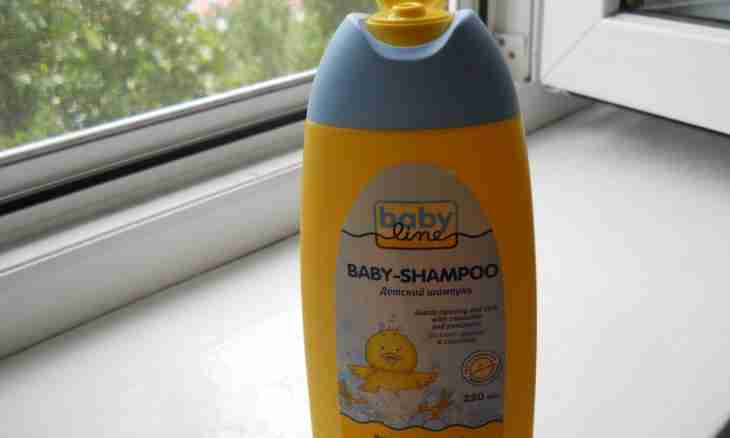Children's skin is defenseless against influence of toxic substances. But whether really cosmetics from category ""children's goods"" guarantee safety of health of the kid? Let's try to understand what ingredients of children's shampoos should be avoided not to do harm to the child.
From all child care products shampoos cause the greatest number of side effects. The washing substances irritating the thin children's skin, chemical fragrances and even carcinogens often are their part. The most undesirable components of children's shampoos are laurt sodium sulfate, diethanol amide, trietanolamine, monoethanol amine, kvaterny-15, DMDM hydantoin, polyethylene glycol, glycol and ethylene diamine tetraacetic acid is sawn through.
Lauret sodium sulfate
Lauret / a lauryl sulfate of sodium (sodium laureth sulfate/sodium lauryl sulfate) is the substance of irritant action promoting formation of cancerogenic nitrosamines. In spite of the fact that it is added to means for a wash of machines and for dry cleaning of the engine, it is nearly the most popular ingredient of the cosmetic industry. According to data of the American college of toxicology this substance can become the cause of diseases of eyes at children. As a result of the conducted researches it was revealed what laurt sulfate of sodium it is dangerous to the immune system of the person; especially it concerns protective function of skin. Under the influence of this substance, skin can be stratified and inflame. And in combination with other chemicals laurt sulfate it will be transformed to nitrosamines - a dangerous class of carcinogens. In the report of the American college of toxicology it is said that ""laurt sulfate of sodium remains in a human body within five days, and products of its disintegration settle in cells of heart, liver, lungs and a brain"".
""Without tears"" the same pH, as a human tear has shampoo therefore it does not pinch at hit in an eye. But neutral pH irritates head skin less therefore it is worth stopping the choice on it, avoiding hit on the person.
Diethanol amide, trietanolamine, monoethanol amine
DEA, MEA and TEA are the derivatives of ammonia causing an imbalance of a hormonal system. They will be transformed to nitrates and nitrosamines which can become the cause of an oncological disease. Most often as a part of shampoos they are specified together with substance-converter, for example kokoamid DEA (Cocoamide DEA) or lauramid DEA (Lauramide DEA). These substances are dangerous that they at their constant application lead to developing of cancer of liver or kidneys.
DMDM hydantoin
This substance, as well as imidazolidinilmochevina, is often used as a part of cosmetics as preservative. It belongs to formaldehyde-donornomu to type of the substances capable to form formaldehyde which in turn irritates respiratory bodies, causes skin reactions and tachycardia. Products of disintegration of formaldehyde become the reason of many problems with health, namely pains in joints, allergic reactions, a depression, breast pain, ear infections, chronic fatigue and insomnia. Heavy side effects from influence of this substance include also weakening of the immune system of the child and even developing of a cancer tumor.
Glycol is sawn through
This surfactant is the main thing of components of antifreeze. That is the same substance is used in the industrial industry and in production of shampoos for children. Propylene glycol destroys cellular structure and easily gets into a blood-groove. In the Material safety data sheet of substance there is a warning that during the work about propylene as glycol it is necessary to use protective clothes as its contact with skin can cause violations of work of a brain, a liver and kidneys.
Kvaterny-15
Kvaterny-15 (quaternium-15) it is used as the disinfector, an antibacterial component of children's shampoos. As well as hydantoin, it is capable to emit formaldehyde which cancerogenic properties are known for a long time.
In 2011 Johnsons&Johnsons under the pressure of the international community agreed to remove kvaterny-15 and the 1.4th dioxane from structure of children's products though the new version of means is exported only to some countries of Europe.
Unfortunately, the inscription ""children's"" does not guarantee safety of use of a product therefore it is worth reading attentively composition of shampoos in order to avoid unpleasant consequences for health, and sometimes and lives of your kid.

